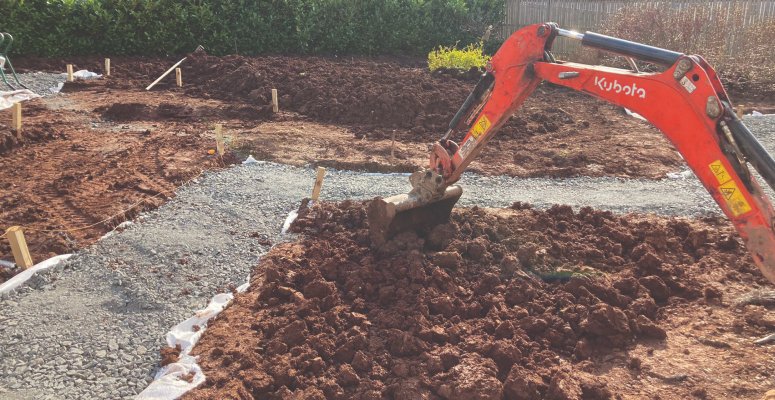Garden designer Rachel Bailey shares how the landscaping industry can play its part in protecting one of its unsung heroes – soil. From working with the existing soil on site to avoiding compaction, there’s plenty that can be done to ensure that soil is able to provide its wealth of benefits, including an incredible ability to sequester carbon.
Design
- Design with existing topography to minimise excavation of soil.
- Retain as much of the existing trees and other vegetation within the design.
- Design for long term change of needs and adaptability.
- Maximise planting areas designing planting adjacent to hard landscaping surfaces.
- Minimise impervious hard landscaping areas especially vehicle load-bearing surfaces (driveways, roads).
- In public realm, design hard landscaping areas so they are permeable and designed to allow plants access to soil beneath paving.
- Work with the soil you have, restoring its carbon sequestration capacity through diversity of plant selection and mix of functional groups (legumes, grasses and herbaceous perennials).
- Where no topsoil is available, use crushed building waste materials to protect topsoil from being excavated and unnecessary carbon release elsewhere and to maximise the carbon sequestration potential.
- Create a soil and vegetation protection plan for the build.
- Specify plants with peat-free compost.

Tracks used for machines over soil and machines kept to areas that are to become paths to avoid compaction of soil
Build
- Physically protect existing soil and vegetation to prevent soil structure damage.
- Avoid compaction when storing materials and operating vehicles; use ground guards.
- Create species-rich lawns in a matrix of native fescue and bent grasses (not rye), whose growth forms allow for self-repair and can easily bounce back after drought (see lawnassociation.org.uk).
- Use recycled crusher run for the sub-base and reclaimed materials where possible to minimise excavation and extension of quarries for new materials.
- Use soft-engineering solutions where possible and root protection methods for constructing near root zones.
- Where hard landscaping is necessary, build to a high standard, without over-engineering (see BS:7533-101 and 102, which is due for release soon) to create landscapes that will last the test of time.
Management and Aftercare
- Leave plant material (such as leaves, dying back top growth) to return to the soil rather than remove.
- Do not use fungicides, pesticides and herbicides.
- Edit borders rather than traditional weeding.
- Assist in the development of a living green mulch.
- Top up the mulch used at the time of planting whilst planting is establishing.
Growers
- Develop alternative methods for growing bareroot plants to minimise soil disturbance and maximise
the health of the plant. - Don’t use peat.
Policy and Legislation
- Enforce existing policies to protect existing trees and greenspaces in the public realm and during building projects.
- Use species-rich, native grass (such as fescue/bent) mixes for all playfields and open green spaces.
- Invest in skilled horticulturists and budget for and prioritise aftercare and management of existing as well as all new greenspaces for establishment and long-term.
- Enhance existing greenspaces with a diversity of plant types.
- Develop and enforce new policies to protect all soil and vegetation by law, during maintenance of grey infrastructure as well as during new building.
- For residential gardens, legislate for a minimum of 50% of a small back garden (>90m2) and 75% of a large back garden (>300m2) to be vegetation.
- Front gardens should also have a minimum percentage of vegetation commensurate with size (i.e, the larger the front garden, the more vegetation should be stipulated) and >5% hard landscaping in front gardens should require planning whether permeable or not.
- For public realm and developments, planning should only be awarded for those that meet the Building with Nature standards.
 About Rachel Bailey
About Rachel Bailey
Rachel Bailey runs an award- winning design practice with a team of four in Scotland. Her practice creates immersive plant-filled gardens and landscapes, which are good for people and wildlife, and that aim to have a low environmental impact. She is a registered member of the Society of Garden Designers, a design member of the Association of Professional Landscapers, and the sustainability officer for the SGD as well as works with the APL council on sustainability matters.





























0 Comments